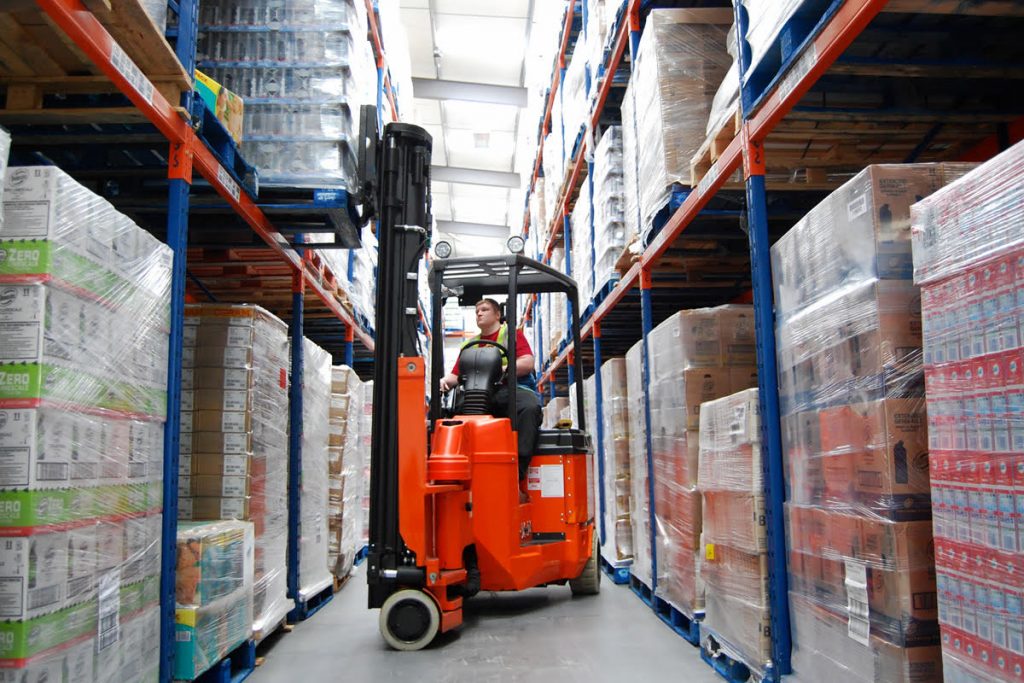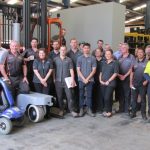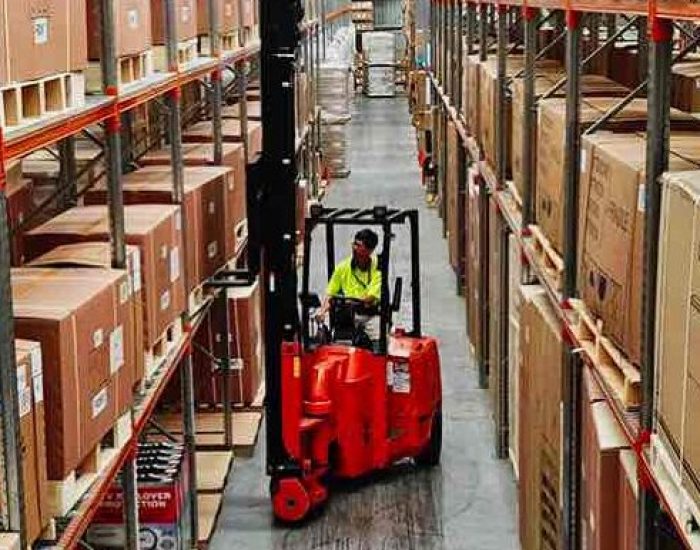Why bend a forklift?
Why bend a forklift is a question we are asked on a regular basis. To understand why you would bend a truck one needs to be clear on the alternatives.

The conventional four-wheel counterbalance is the most widely used type of pallet stacking device the world over because its original design is practical, versatile and cost-effective. The truck does, however, require a lot of space relative to the size of load and 4m – 5m aisles are not uncommon.
3 wheeled counterbalance trucks were designed to reduce the stacking aisle. In general these machines, whilst a more cost effective alternative, lift less weight and are less able to work on rough terrains, so they are more associated with internal warehousing and minimal yard work.
Reach trucks have a mast or tines that ‘reach in or out’ from the body of the truck. This is to further reduce aisles and can work in aisles of approximately 3m wide offering a valuable saving. To enhance the aisle performance, reach trucks are designed in a compact manner and this necessitates harder tyres to overcome stability issues resulting from the high centre of gravity. These smaller, harder tyres dictate that the reach truck is only suitable for inside work or very smooth yards. More often than not a counterbalance truck is required to load vehicles from the warehouse.
Very Narrow Aisle Trucks
VNA (very narrow aisle) trucks are capable of working in much narrower aisles, approximately 1.7 – 2m, making the maximum use of storage space. This is the area in which UK forklift designer Freddy Brown was responsible for many developments prior to designing the original Bendi articulated truck.
Due to the close tolerances within the VNA aisle, a number of criteria have to be fulfilled. Expensive floors with very fine tolerances are required to meet the flatness required by VNA machines. Rail or wire guidance is used to enable the truck to be millimetre perfect whilst travelling up and down the aisle and this guidance adds significant cost. Ironically, large spaces (transfer aisles) measuring 4 – 6m at the end of each aisle are required to allow the VNA trucks to transfer from one aisle to the next which wastes valuable storage space and is a slow process. This type of truck is also only suitable for in aisle operation which means that other more conventional trucks are required to feed the VNA system and take goods away. Every VNA truck is tailor-made for each warehouse, product and racking system which means that the product can’t vary too much and the trucks cannot easily be relocated. Short term hire or replacement in the event of a breakdown is virtually impossible to find. For many companies this inflexibility combined with the operational costs limits the size of the VNA marketplace.
Bendi recognised that all efforts to reduce aisle size come with compromises and the more space saved, the more compromises arise. The Bendi was developed to remove all of these issues with a fast moving, narrow aisle, general purpose forklift:- One truck that could do everything – inside, outside and that was mass-produced to fit all applications. The result was the Bendi, the original and still the world’s most popular articulated truck.
So what are the real benefits of the Bendi?
Rising property and land values, heating, lighting and maintenance costs are all major factors increasing the cost of operating a warehouse or factory. Businesses throughout Australia are being forced to streamline their operations, which in extreme cases can result in closure of some locations. This has led to an increased number of companies trying to condense their operations under one roof and this is when the Bendi comes into its own!
Bendi’s 220° mast and axle rotation enables the truck to operate in aisle widths of only 1800mm with Australian pallets – less than half of what it would take to operate a conventional 2 Tonne counterbalance truck. This means double the storage capacity or increased area for the production facility. It also means less trucks and increased productivity, which in turn can mean huge cost savings.

Advantages to the Manufacturing Industry
It isn’t however just the Warehousing and Distribution sectors that are enjoying the benefits associated with the Bendi articulated truck. Companies in Manufacturing and Production industries are also benefiting from significant improvements in handling efficiencies.
Manufacturing, unlike many other industries, has to cater for numerous and varied handling tasks including off loading and storage of the raw materials, transportation throughout the manufacturing plant, feeding production lines and storage and distribution of the finished goods. Historically this would have resulted in the need for different types of handling equipment, ultimately being under utilised which increases the truck fleet costs, and double handling the products thus leading to operating inefficiencies and increased risk of damage.
Thanks to the innovative design of the Bendi, which enables the truck to operate safely in working aisles and spaces of only 1800mm with Australian pallets, double handling is a thing of the past. Manufacturing customers of Bendi are using one truck to unload vehicles, transport and feed the production lines, store the finished product and then distribute. This has led to huge cost and efficiency gains throughout the manufacturing process:-
- Reduction in forklift fleet operating costs.
- Increases in storage capacity which means more components and raw materials can be purchased at lower costs.
- Reduction in the storage area required which offers more space for production or assembly.
For more information about why Bend a Forklift or Bendi Articulated Forklifts visit our product page at www.bendi.com.au/products or alternatively contact us on info@bendi.com.au to discuss your requirements. Make sure to follow us over on our social media pages; Facebook, Twitter and LinkedIn, to keep up to date with Bendi Australia.




